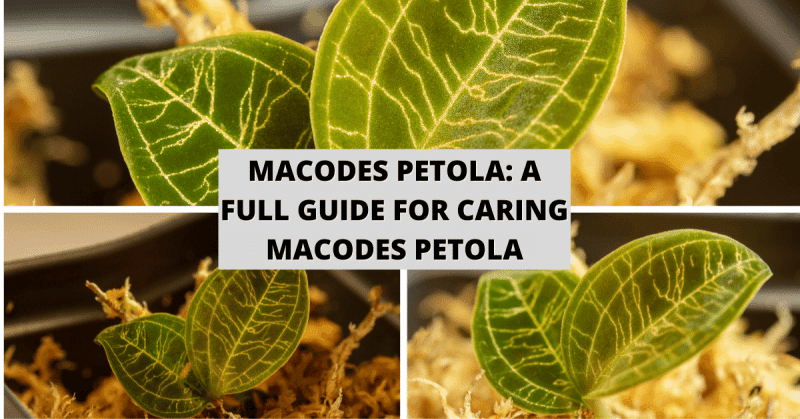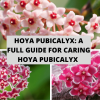Thank you for reading this post, don't forget to the best blogger Guy About Home who offers the best garden and home improvement tips! If you are a home decor and design fan, don't miss the tips on home ideas. If you are a home garden owner, then you might be interest in our complete guides to house plants!
This blog is a very detailed guide about Macodes petola care without a lot of hassles. Read on to find out more about this fascinating plant.
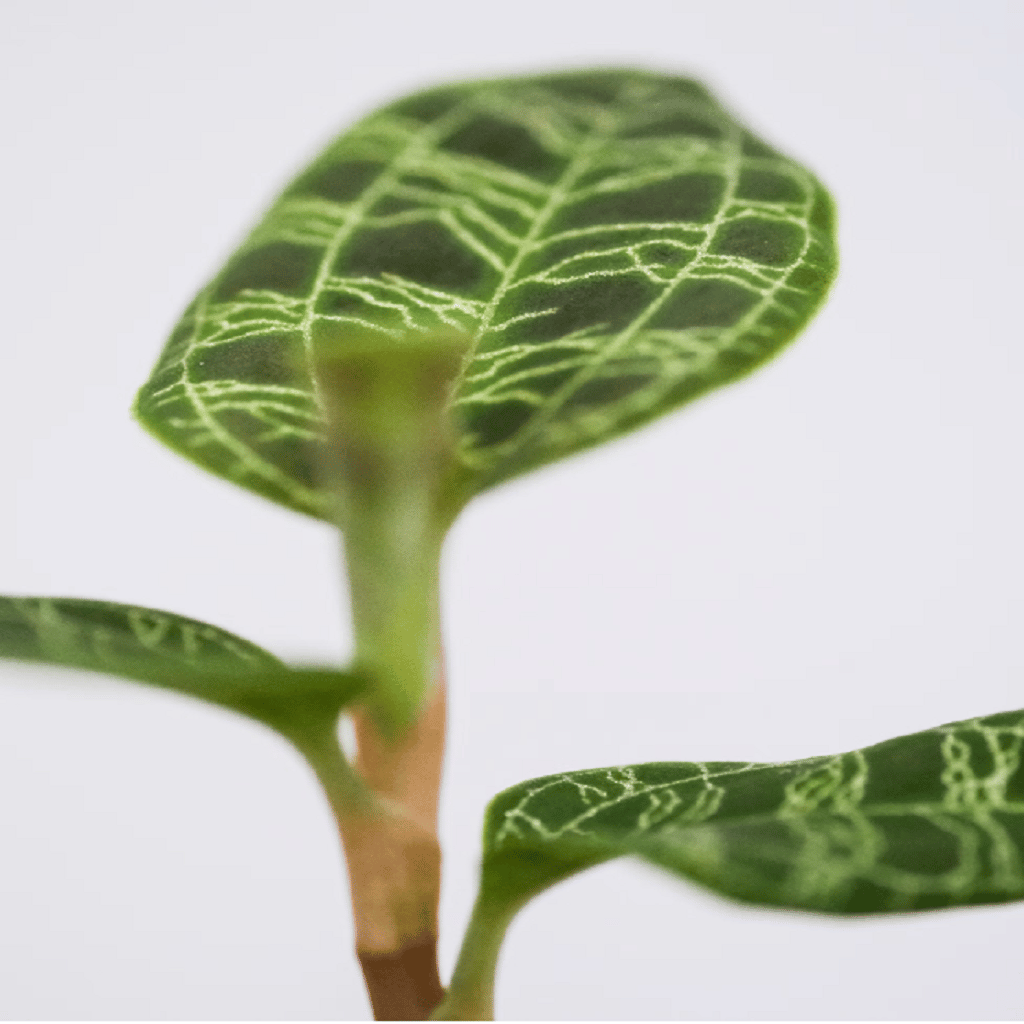
Source: Unsplash
It’s hard to imagine that the late-fall stem spikes with small flowers are related to the spectacular displays of other orchids. The small white flowers of the Macodes petola have off-white centers. Though susceptible to rot, the plant isn’t picky provided its fundamental needs are met – after all, it is a weed in its home region. The Macodes petola is a good choice for a terrarium, but it may also thrive as a typical houseplant if kept optimally wet.
What is Macodes Petola?
Macodes petola is a jewel orchid that grows in soil rather than as an epiphyte beneath the forest canopy. The plant is treated differently than other members of its famous family since it is grown for its beautiful leaves rather than blooms.
Macodes Petola Origin
This unusual orchid is found in Southeast Asian rainforests, including Malaysia and a number of Pacific islands. Different from perennial hanging plants, It lives in the shadow of the forest at lower elevations, where it enjoys a warm, wet habitat. Macodes petola spreads across the ground because it has a spreading rhizome. Its evergreen foliage develops in loose whorls to create six-inch-long rosettes.
Types of Macodes Petola
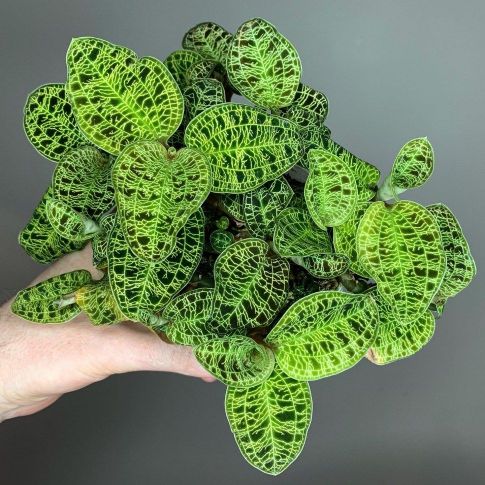
Source: Pinterest
There are several kinds of Macodes petola Jewel Orchid. Similar to manjula pothos, the colors and patterns of the veins on the leaf surface are used to differentiate them. The following are some common varieties/synonyms:
- The robusta variant (only longitudinal veins)
- The Javanica variant(white transverse and longitudinal veins)
Argenteo, Iatifolia, Anoectochilus petola, Valutina, Veitchianuss, Cuprea, Veitchii, and Argyroneura are all the other synonyms for Macodes petola.
Macodes Petola Facts
Like dragon monkey face orchid, Macodes Petola is a beautiful plant especially known for its jewel-like foliage. The following are some of the prominent features of the plant.
- Macodes petola is a small flower with brownish-red petals, a yellow border, and a white edging that blooms in the winter.
- It thrives in a wide range of natural settings including wet woods, between 300 and 1600 meters above sea level.
- The veins on the leaves are glossy and shimmering, with gold dust strewn over them.
- The Macodes petola keeps its green leaves all year long.
- It coils in a sloppy elliptical to oval convolution about 12cm long and 7cm wide.
- The leaves have a fuzzy texture, are dark green with a network of veins, and purplish-green on the underside, with a grooved stalk clasping at the base.
- The Jewel orchid grows quickly in bright light, although it slows down in the winter and in low light.
- The blooming stalk is generally twice as tall as the plant itself.
- It’s a thermophile because as the name suggests, it is attracted to heat and grows well in high temperatures.
- Macodes petola possesses a rhizome, which is a subterranean horizontal stem that grows constantly. At regular intervals, Macodes Petola sends out lateral branches and adventitious roots also known as rootstocks.
Macodes Petola Care: Things to know
Is Macodes Petola rare?
The Macodes petola is a stunning jewel orchid with leaves that appear to literally light up a room. Though it isn’t the simplest houseplant to care for, it may thrive with proper care. Caring for Macodes Petola necessitates bright or moderate indirect sunlight and warm temperatures of 65-85ºF (18-29ºC) all year.
Not confident in planting an indoor plant? Why not getting power from our inspiring indoor plants quotes?
How Big Does a Macodes Petola get
This is an evergreen tropical perennial plant. The foliage is succulent and herbaceous. The rhizomes of Macodes petola give rise to roots. A full leaf is approximately 15 cm long and 7 cm broad. The height of a Macodes petola is generally between 4 inches to ^ inches, while the spread of the plant is between 6 inches to 12 inches.
Where to grow Macodes Petola?
Petolas are commonly cultivated in containers or terrariums, although they may also be grown in pots. Macodes petola is a medium-sized plant. Rhizomes, tubers, and bulbs are divided to reproduce these plants.
Does Macode Petola flower?
The Macodes Petola, although a plant known mostly for its jewel-like leaves, also grows flowers. Like majesty palm, the Macodes petola blooms during the winter and the fall, the two best seasons for its growth. Macodes petola inflorescence is spiky, upright, terminal, and about 20 cm long. The Macodes petola flower has a white lip and is white, brown, or light green in hue.
How Often Do Macode Petola Bloom?
The hairy outer layer of the Macodes petola has a greenish or white tip and the blooms are in a number of 5 to 6. Macodes petola flowers are around 1cm in diameter and are rather tiny. Hence, the flowers are non-resupinate and inconsequential.
How Fast Does Macode Petola Grow?
Macodes petola is a medium-sized Jewel orchid with a medium-to-fast growth rate, making it excellent for long-term terrarium and vivarium residents. When fully grown, they provide lovely, gleaming full clusters of leaves.
How to Care for Macodes Petola?
Same as crispy wave fern, Macodes petola are mostly low-maintenance plants, they sometimes require a bit of care. Here’s how to grow Macodes petola and the most appropriate conditions for it. Not confident in planting an indoor plant? Why not getting power from our inspiring indoor plants quotes?
Besides this plant, we also make a full care guide on how to care for Majesty palm.
Macodes Petola Soil
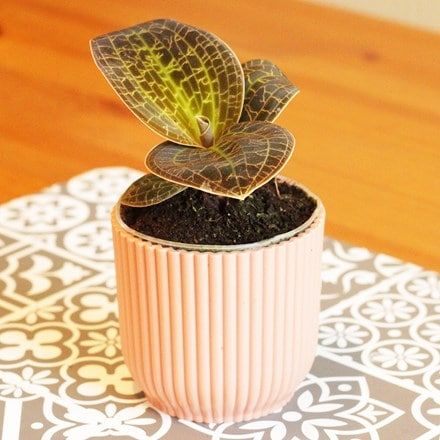
Source: Pinterest
It grows in loose forest soil and along river banks on the ground (unlike most other orchids which are epiphytic). As a result, Macodes petola soil requirements are not extensive, they might be grown fairly readily in ordinary soil. Sphagnum moss, perlite, peat, and other materials as the perfect soil for Macodes petola growth are the subject of a lot of debate on the internet. They’re ideal for creating a porous, well-draining, and moisture-retentive substrate, which is ideal for jewel orchid. However, even ordinary soil, crushed leaf litter, bark, and gravel are beneficial to Macodes petola because it is the kind of soil that they are used to in their original habitats.
Macodes Petola Light
This jewel orchid lightning is a thing to behold. Their velvety-textured, rounded, wide leaves contain thin, webbed “lightning bolts” of lighter hue on a dark green background. In the sunshine, the amazing netted design shines and creates an electrifying impression.
Macodes petola maintenance requires bright, indirect light. This plant is described as a shade-loving plant. Hence, direct sunlight should be avoided at all costs because in direct sunlight, leaves will fade and burn. Monstera borsigiana is another plant that also grows great indoors.
However, a little bright filtered light brings out the colors in the leaves much better. In addition, very little light causes the rhizomes to become leggy. Overall, Macodes petola care is easier to handle when grown indoors under adjustable grow lights that can be configured to replicate the forest conditions of continuous and extended brilliant shade. If you don’t have grow lights, keeping the plant a few feet away from a bright east window will suffice.
Macodes Petola Humidity
The air is sultry in the jungles, with humidity levels above 85%. Macodes petola will thrive under these conditions. However, when it comes to Macodes petola maintenance, keeping the growth medium and roots moist is far more vital than maintaining a high humidity level. They like humidity, although they may survive without it as long as the roots can sense wetness. Hence, they can also be grown in air-conditioned rooms with proper watering and drainage.
Macodes Petola Water
This orchid thrives in river banks or in swampy woods in its natural habitats of Java, Malaysia, Sumatra, Borneo, the Philippines, and the southern islands of Ryukyu, where the dry season is short. Throughout the year, there is a lot of rain. The trick is to keep the soil mix moist at all times.
Similarly, if you’re growing Macodes petola at home, you’ll need to water it frequently. It is critical to maintaining the wetness of the soil at all times. That’s why all of the soilless substrate lovers who use sphagnum moss and peat have had success with jewel orchids since these materials can store a lot of moisture. However, unlike a paddy field, the soil cannot be damp and moist. Instead, you have to ensure that the water has completely drained off.
Macodes Petola Temperature
This one-of-a-kind orchid can only be found in Southeast Asia’s hot and humid jungles. It dwells in the shadow of the forest at lower altitudes, where organic life warms the air. To grow a healthy Macodes petola plant, it would be great if you can repeat this process throughout the year. The normal day temperature for Macodes petola care should be 27-29 °C (80-85 °F), and the average night temperature should be 18-19 °C (65-67 °F). So, basically, summer is required all year!
The northern winters are difficult for this succulent, frost-sensitive shrub. Hence, a s soon as fall approaches, the plant should be brought indoors. Keep it free from chilly breezes and hot radiator air once it’s inside. The less temperature variation there is, the better.
How to propagate Macodes Petola?
Macodes petola is propagated mostly by asexual reproduction. This means that new plants will have the same genetic makeup as their parents. Same as longevity spinach, to propagate Macodes petola plants, it is always advisable to utilize sterilized equipment. Cuts leave the plant exposed to infection. To prevent this, it is best if you wipe the blade with isopropyl (rubbing) alcohol.
Just as the propagation tips we created for the plants manjula pothos and lemon button fern, The following are guidelines about how to propagate Macodes petola.
Besides this plant, we also make a full care guide on how to propagate Manjula pothos.
Macodes Petola Propagation Through Stem Cuttings
This is the most popular method of propagation for Macodes petola plants.
- For this method, you need to wait until June, right before the growing season begins in the tropics.
- Use a bug-free mother plant and a healthy herbaceous tip cutting.
- It has to have three leaf nodes. Leaves from the lower node should be plucked.
- Rooting hormone powder can be used, although it usually grows without it.
- Never let it dry out after placing it in uniformly damp sphagnum moss.
- Maintain a temperature of 27-29 °C (80-85 °F) by placing the cutting in direct sunlight or under grow lights.
- This plant requires moisture. A large clear ziplock bag with a few holes can be used to conceal the cutting.
- Don’t interfere with the cutting until it has become entrenched.
Macodes Petola Propagation Through Water Rooting
Propagation through water rooting is one of the other successful methods for Macodes petola. This is because of the presence of fleshy rhizomes.
- Take a few nodes from healthy stem tips with 3-4 leaves.
- Use a shot glass or a glass jar that is 3/4 the height of the cutting board.
- Fill the container halfway with dechlorinated or RO water and half a drop of an excellent liquid rooting concentration.
- Put your clippings in this jar and store it somewhere warm, between 27 and 29 degrees Celsius (80 and 85 degrees Fahrenheit).
- The roots growing out of the nodes might take anything from 4 to 8 weeks.
- It’s the best practice to change the water every week.
- Transfer the roots into potting soil after they are approximately a centimeter long and sturdy.
Macodes Petola Propagation Through Offset Division
- Dividing clumps or offsets and raising them as separate plants is the simplest approach.
- Carefully separate the offsets; for the cleanest separation, you may need to unpot the plant.
- To give the offset a good start, make sure it has growing roots.
Macodes Petola Propagation Through Air Layering
Although this approach requires more effort, it is beneficial if you are having difficulty rooting your cuttings.
- Wounding the stem, administering root hormone, and covering the region in damp sphagnum moss are all part of the process.
- Until Macodes petola roots develop, the covering is sealed. On leggy stems, this method works well.
Macodes Petola Care: Bonus Tips
Here are some of the additional tips that will help you take care of your Macodes petola plant.
- After a move or transplant, a Macodes petola needs time to establish itself. It’s normal to see some wilting or leaf loss.
- Take caution when handling the leaves. They are delicate and will quickly break if bent.
- A tiny, low-cost fan might be a discreet option for your plant.
- The plant thrives in an open environment, which is one disadvantage of a closed terrarium.
- If the top of your sphagnum moss becomes green, don’t be alarmed: it’s simply algae. Algae is unlikely to harm the plant if it doesn’t get out of hand. It can be reduced by spraying with a diluted hydrogen peroxide solution.
- When watering, flush the soil by allowing it to flow freely via the drainage holes.
If you have no ideas which kind of plants to grow, then try the easy-to-care plants, such as ficus triangularis, trachyandra tortilis.
How much does a Macodes Petola cost?
Because of its exquisite beauty and looks that almost convince everyone that they are straight out of the magical lands of Pandora, Macodes Petola are quite expensive plants. Generally priced between $17-$19, these plants are also expensive because they are native to the lands of south-east Asia. Due to over-collection, the plant’s commerce is restricted, although tissue culture is steadily increasing its availability, thereby also reducing its cost.
Why is Macodes Petola so expensive?
In the realm of Jewel orchids, Macodes petola is a true show stopper. This orchid, like other Jewels, is grown for its foliage rather than its blooms. When fully grown, the leaves can be any shade of green, as well as rich maroons and vivid oranges. This cultivar is well recognized for the beautiful metallic veining seen on the leaf in contrast to the richly pigmented backdrop. Because of such a beautiful look, a Macodes petola plant is one of the costliest orchids available in the market.
Where to buy Macodes Petola?
Although it was difficult to get hold of a Macodes petola plant even a few years back, just as lemon button fern, with the rise in tissue culture practices, the plant is becoming more widely available. If you have decided that you wish to add this plant to your nursery and want a Macodes petola to buy, a simple Google search will land you on the right sites. You can find the Macodes petola for sale on numerous sites including even Amazon.
You may also run a search on the Facebook Marketplace to connect with growers who will make this plant available to you. However, before purchasing, ensure that your seller is not tricking you into buying a different variety. Closely examine the characteristics of the plant you are buying with the features discussed in this article. Rose of Jericho, Alocasia Black Velvet, and Ficus triangularis are some of the other plants that you can consider growing indoors because of their amazing value and beauty.
Conclusion
Macodes petola does not require a lot of fancy treatments and growers around the world have successfully grown this plant with the help of very basic sunlight and water. This shows that this plant does not need a lot of care but to grow it, one needs to know some nuances about it. Although growing a Macodes petola might seem like a really daunting task, you are absolutely covered if you closely follow the guidelines. However, if you want more information about Macodes Petola, you can check this out. Happy growing!
For more amazing ideas you can have, visit Guy About Home today or you can check the related blogs:
- Longevity Spinach: A Full Guide For Caring Longevity Spinach
- Vermicomposting: How To Compost with Worms
- Everything You Need to Know About Growing Tomatoes Indoors in Pots
- No Dig Landscape Edging: The Best DIY and Store Bought Edging For Your Garden
For more step-by-step ideas, diy tips and guides, kindly visit the website guyabouthome.com providing the best garden & home improvement tips.


